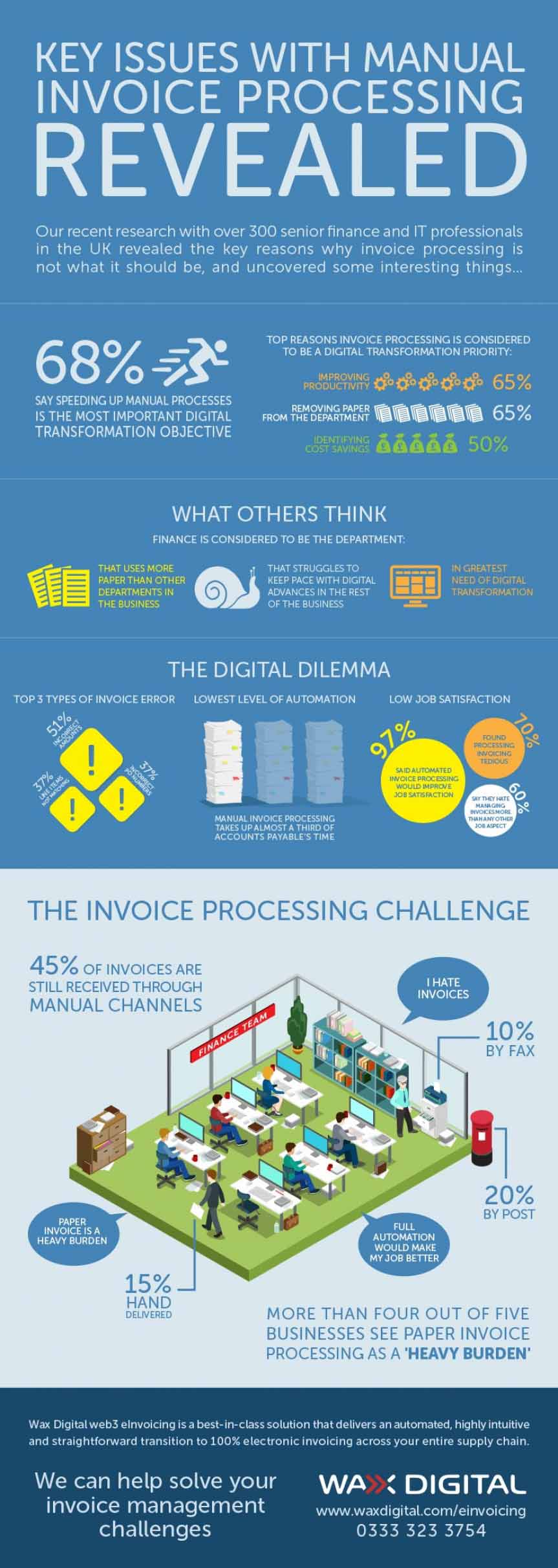
Invoicing is still a manual process for most companies, to the disappointment of financial departments. Switching to digital invoicing has the potential of many benefits, such as increased productivity, financial savings and job satisfaction. Wax Digital's survey of 300 finance and IT professionals in the UK takes a look at digital invoicing, the findings of which are summarised below.
Invoicing today
At present, invoicing is still a mostly manual process. Some call it the "Achilles heel" of finance, that is desperately trying to keep up with the digital transformation of companies.
In terms of digital maturity, two figures are particularly striking:
- Most financial department processes (including managing and processing invoices) are still carried out manually (up to 30%).
- More than two thirds of supplier invoices are received via "manual" methods, such as delivery by hand (15%), fax (10%), post (20%) and email attachments.
The impacts of this cannot be ignored: 43% believe that this can affect the efficiency of the entire business, 37% worry that suppliers do not want to co-operate with them and 19% think that that finance department is negatively perceived by other departments within the company.
Finance has a major challenge on its hands. It is not only one of the most reluctant departments to accept this digital transformation, but also the one where it is most needed.
With this in mind, a main objective emerges for 85% of survey respondents: to accelerate and improve manual processes.
Five good reasons to digitalise invoicing
Financial departments are fully aware of the benefits that can be expected from digitalising invoicing. Survey respondents mentioned the following in particular:
- Improving job satisfaction (97%): For 60% of respondents, invoicing is the task they hate most at work.
- Improving productivity (65%)
- Reducing paper consumption within the department (65%): The Finance department uses more paper than any other department in the company.
- Identifying cost savings (50%)
- Reducing errors: 12.5% of invoices contain errors made by staff working in the Finance department, while 14% of manual errors come from the supplier.
Over time, digitalising invoices primarily means improving the daily lives of the teams and making time for them to complete tasks with greater added value such as general process improvements and looking for solutions and opportunities to reduce costs.
However, it also means making substantial savings : Wax Digital calculates that potential savings for each digital invoice could add up to £10.
That is why, as a member of the procurement department, the digitalisation of transactions from the product research to the invoicing stage is (or should be) a crucial element when choosing your suppliers.








